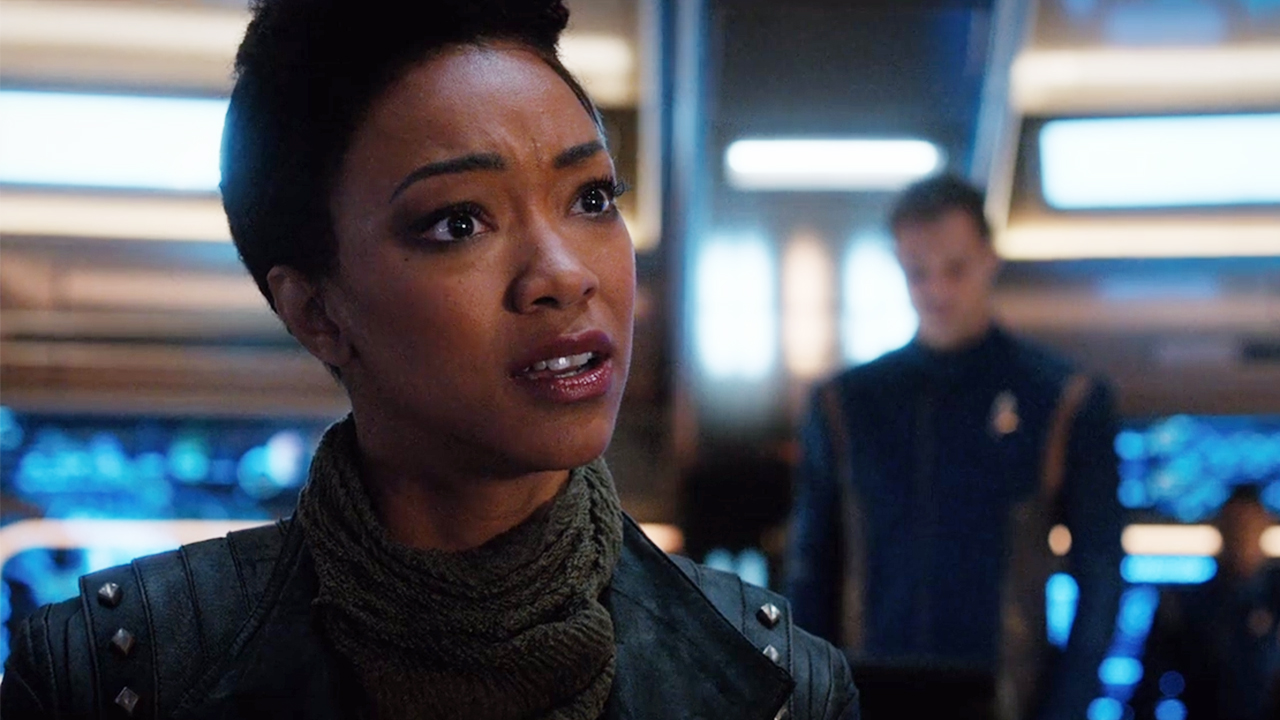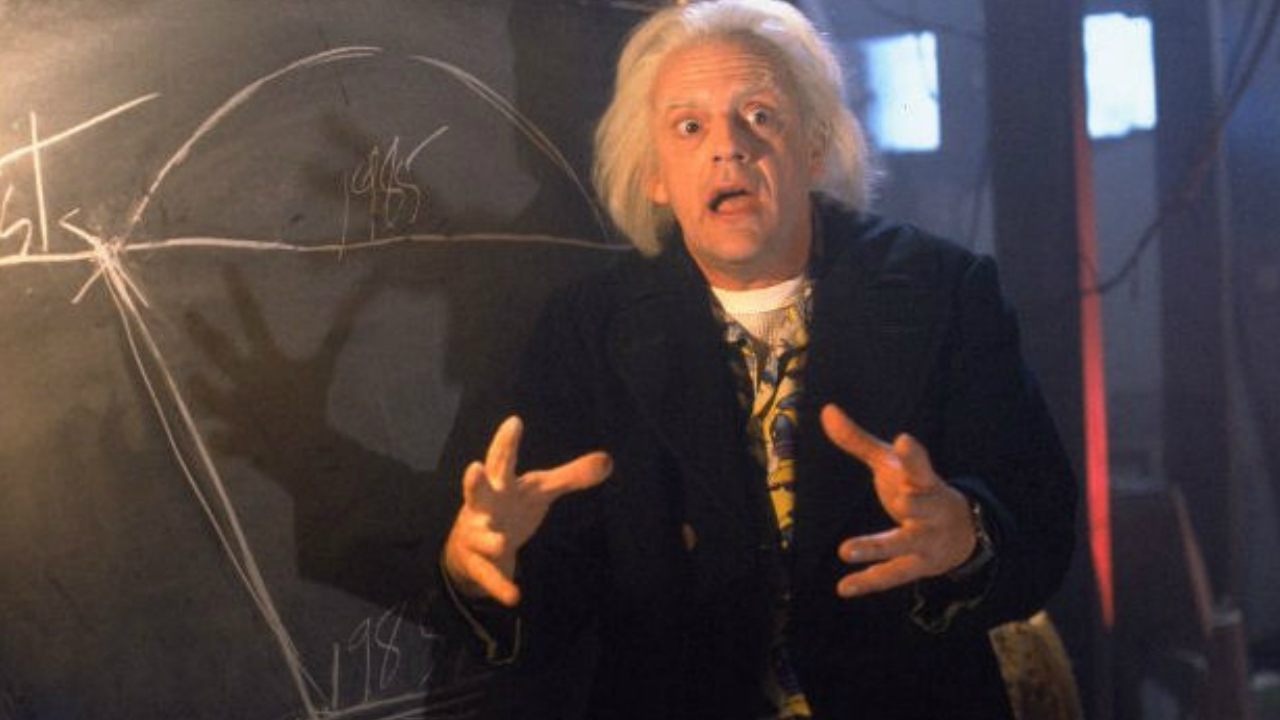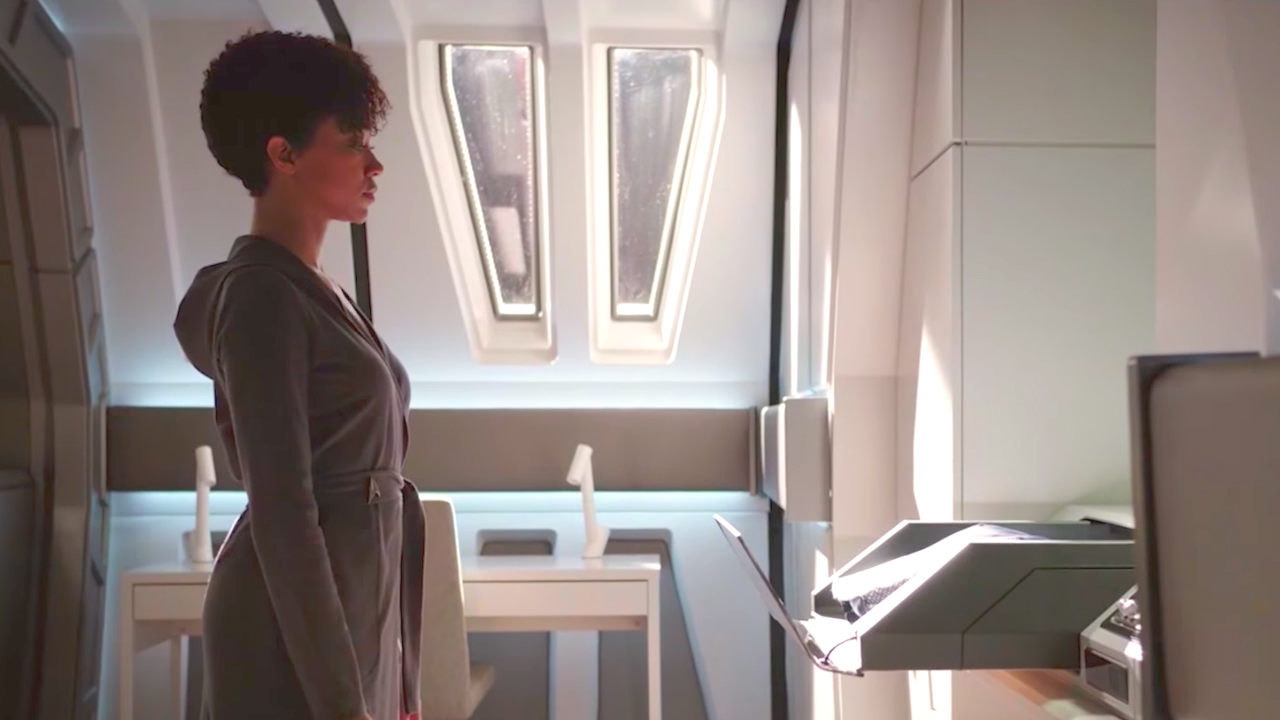Prime, Kelvin, or something else - Which universe is Star Trek Discovery actually in?
Is Star Trek Discovery in the Prime or Kelvin timeline? Why nothing adds up in the latest TV show

One of the biggest questions around Star Trek Discovery has been what universe it’s in? That’s actually not as easy as you might think to answer, despite what the showrunners and cast might say. Star Trek is a world where anything could happen because... physics. There’s a Prime timeline, a Kelvin one, the Mirror Dimension and more time travelling and universe hopping than several other shows combined.
For example, Beverly Crusher once spent an episode of The Next Generation on a version of Enterprise that existed in a pocket universe only 705 meters wide. While, canonically, Spock has existed on four separate timelines: the Original Series, an animated series timeline where time traveling saw him die as a child, requiring him to nip back in time to pretend to be his own cousin to fix it. Plus, the J.J. Abrams reboot’s divergent timeline where a future and current version of the same character co-exist.
The series has ripped reality apart for dramatic impact over the years and then scrambled to explain away the inconsistencies. And let’s not forget Discovery is built on lies regarding the whole Tyler/Voq story arc and casting. The creative team behind Discovery has been very careful in stating how the show will “respect canon”, but often outright avoid saying explicitly that Michael Burnham and the crew of the USS Discovery occupy the same specific universe or dimension as the Archer, Kirk, Picard, Sisko, or Janeway we know and love. Technically the Kelvin timeline and Prime timeline coexist and run concurrently together, so why not other variations? (More on this in a moment.)
First things first
Establishing what universes actually exist is probably the best place to start. In the beginning, there was just Star Trek, now referred to as The Original Series (or TOS). That’s the Prime timeline - along with the Mirror Universe (the evil dimension where everyone’s bad), first introduced in a 1967 TOS episode called Mirror Mirror. Star Trek, Next Generation, Voyager, Deep Space Nine, and Enterprise, all take place there.
Then there’s the Kelvin timeline which was established in J.J. Abrams’ first movie when the Romulan, Nero, travelled back from the future and destroyed the USS Kelvin a little under 30 years before TOS originally took place. In doing so he created a divergent timeline that was subtly different to the Prime one (and cleverly explained why so much was different in the reboot). There are many notable differences: Kirk’s father died on the Kelvin, and he joined Starfleet three years later than in the Prime timeline. The Enterprise was built a decade later, the Vulcan homeworld was destroyed, Chekov’s birthday even slipped a few years.
It’s basically like the bit in Back to the Future when Biff gets the almanac and messes up the future by creating a new one alongside the old one.

As I mentioned a moment ago, like Doc’s chalkboard drawing, both the Prime and Kelvin timelines coexist in the same universe, the latter a quantum reality existing alongside the former. This is something more or less signposted in an early draft of the first Abrams’ movie, which includes dialogue where a young Spock is asked what the main assumption of quantum cosmology is and he answers, "everything that can happen does happen in equal and parallel universes."
Bringing all the latest movie news, features, and reviews to your inbox
Co-writer for the 2009 Star Trek movie Roberto Orci backed this up in an interview when asked if the new timeline had wiped out the old one, answering, “it continues. According to the most successful, most tested scientific theory ever, quantum mechanics, it continues.” In that same interview he also points to The Next Generation episode Parallels (where Worf slips from one reality to another after passing through a quantum fissure). There, Data again talks about how “all possibilities that can or could happen, do happen in alternate quantum realities.” That episode sees numerous, slightly different versions of the Prime reality, separated by imperceptible differences (the colour of a cake, for example).
The implication is that there could be numerous Prime and Kelvin realities, basically identical, but separated by a haircut here, or a coffee instead of an Earl Grey there. In fact, 2009 film writer and Discovery producer Kurtzman has explained the Prime and Kelvin’s similarities and improbable coincidences as “the timestream’s way of trying to mend itself” a line that was at one point written for Prime Spock in the movie when he impossibly meets Kelvin Kirk in a cave. The idea floated is that there is a ‘most probable’ version of reality that happens more than others, despite minor differences.
So, where the hell does that leave Discovery? Early Tweets from Anthony Rapp, who plays astromycologist Lieutenant Paul Stamets in the show, seemed to clearly state Discovery is Prime timeline
Yes it is in the Prime timeline. Yes. Yes. Yes. Yes.September 15, 2017
While author David Mack who was ‘in the loop’ during Discovery’s development also said the show’s Prime, while adding that “‘discrepancies’ will be addressed/resolved.”
What Anthony said. Yes, Discovery is in the Prime timeline. It fits w/canon. Apparent "discrepancies" will be addressed/resolved. It works.September 15, 2017
That might seem cut and dry if it wasn’t for the fact that these tweets went out before the show aired, as fans reacted more to the look of the show than the content:
Have faith; look past the surface, past the superficialities of aesthetics. See the HEART of @startrekcbs: it's real STAR TREK to its core.September 15, 2017
There’s no arguing that Discovery is ‘Star Trek to its core’ but there’s still so much that doesn’t add up. On the surface, the appearance and some of the more advanced tech matches the Kelvin timeline, with its more contemporary uniforms and more advanced ship. Plus, there are some huge inconsistencies with either timeline beyond the basics of Burnham being Spock's previously unmentioned half-sister, the fundamentally different looking Klingons (especially as this is the peak time for the more ordinary looking Klingons of the TOS, explained by a virus created from augmented human DNA), or the apparent near destruction of the Federation. (I barely even want to mention the Spore Drive, as it's so canonically inconsistent.)

Some things are clear contradictions. For example, at one point in Discovery we see Burnham replicating a uniform, the fabric being constructed at an atomic level. This contradicts previous canon that Replicators were a Next Generation era technology - Captain Janeway, in an episode of Voyager, states that in Captain Kirk’s time there were “no replicators. No holodecks.” There were devices called protein resequencers that could make food, essentially organic 3D printers, but these were a world away from the teleporter tech apparently forming Burnham’s clothes atom by atom. Janeway’s statement obviously also makes the holodeck training program we see Lorca and Ash using slightly awkward. TOS did have Rec Rooms that were capable of holographic projections but these were more movie-like projections that simulations.
Such huge discrepancies have been waved away by fans saying the Discovery’s status as a military vessel gave it access to technology other ships of the time didn’t have. It’s a stretch though. The Next Generation establishes that replicators weren’t really on ships until the 24th century, some 110 years after the events of Discovery. (There was replicator-like tech in TOS but it was used by aliens or entities from the future.)
While we’re talking about time periods it’s worth mentioning just how cleverly the show is set to avoid specifically identifying a Prime or Kelvin timeline outright. The attack by Nero that created these two divergent realities happened in 2233, the end of season 1 sees the Discovery make contact with the TOS-era Enterprise in 2257 when Commander Pike is still captain. This date’s beautifully placed, as it’s just close enough to some big events without clearly picking a side.
In the Prime timeline Kirk doesn’t take over the Enterprise until somewhere in the 2260s when Pike is promoted, before the TOS episode The Menagerie brings him back hideously disabled in 2267. However, in the Kelvin timeline Kirk is on the Enterprise in 2258 when Nero attacks Vulcan, and Pike is later killed in 2259 by KHAAAAA… sorry, Khan. Remember that in the 2009 film, while the Enterprise’s maiden voyage was in 2258, a year after it meets Discovery in the show, all ships go through ‘shakedown’ - a series of test flights and voyages to rattle the bits and make sure nothing falls off before being declared operational. A malfunction there would certainly fit in with the priority one distress call the season ends on.
“You have to understand the timelines and what the different universes were and how they all worked together.”
Discovery co-creator, Alex Kurtzman
So season 1 interestingly ends juuust at the point where it would have to conclusively prove which universe it’s in. As I mentioned before, series’ co-creators, like Alex Kurtzman, have been very good at talking around settings without being completely definite. “You have to respect canon,” stated Kurtzman in this interview. “You have to understand the timelines and what the different timelines were and what the different universes were and how they all worked together.” In the same interview he also says “we are adhering to a timeline and sticking to the rules”. In another interview he also says, “We’re certainly endeavoring to be entirely consistent with Original Series canon.”
All that talk of “respect” and “consistency” still leaves room for surprises. And, after the Ash/Voq twist and Lorca’s Mirror Universe reveal, it’s pretty clear the show isn’t afraid of pulling some pretty big twists. But if we’re going to get any answers it’s going to happen in season 2. You don’t end on a ‘meeting TOS-era Enterprise’ cliffhanger without people expecting you to deliver the goods. The question is what that’s going to be?
Season 2 you say?!! Sounds good to me!! CAN’T WAIT to see what comes next!! #StarTrekDiscovery @StarTrekRoom @startrekcbs 🤣❤️🖖✨ pic.twitter.com/LJhGhKYwIfOctober 23, 2017
Interestingly, when interviewed about season 2, co-creator Alex Kurtzman addressed the idea of who might be on the Enterprise, stating “I think there will be some surprises there. We will maintain consistency with canon, but there will be surprises.” That would seem to suggest an unexpected, but familiar name or face, although he also goes on to say, “if we bring in characters from the Original Series, they have to adhere to canon. So anything that’s been mentioned in TOS, either storyline or character-wise, we have to stay consistent with.” Note that he still doesn’t actually say the show is the TOS universe, just that they might use characters from it. Technically, even the Kelvin timeline Sarek is ‘a character from the TOS universe’, first appearing in the 1967 episode Journey to Babel.
The practical upshot of all this is that, yes, all the talk seems to say that Discovery is in the Prime timeline. Although we’re still really lacking any real definitive event or character to incontrovertibly prove it - there are huge inconsistencies we’ve still yet to see explained and all the talk from the showrunners still leaves room for a new universe or timeline. Perhaps from an event yet to happen in season 2 that creates a third timeline, and will finally explain the inconsistencies. Whatever happens, season 2 has reached a point in Star Trek history where Discovery will have to decide once and for all.

I'm GamesRadar's Managing Editor for guides, which means I run GamesRadar's guides and tips content. I also write reviews, previews and features, largely about horror, action adventure, FPS and open world games. I previously worked on Kotaku, and the Official PlayStation Magazine and website.



